May 1, 2019
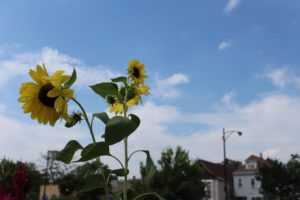
by Steven Dougherty, Precious Blood Volunteer
Steven Dougherty is a Precious Blood Volunteer serving at Precious Blood Ministry of Reconciliation (PBMR) in Chicago, Illinois. In the three reflections below, Steven paints pictures of hope he has encountered while working there.
My second week in Chicago was one of the most violent in recent history. Waiting for the bus, I saw a man and a woman talking. They spoke slowly. The air was thick and hot. As she was leaving, the woman leaned in and hugged the man. Then she held him for a moment at arm’s length. She looked him in the eyes, and with worry in her throat she said, “Be safe.” Her words, thick in the hot air. They were desperate wounded words, heavy with fear. This was a command, a salutation, a wish—something impossible, or at least it seemed so at the time. So many people had died. Then she let the man go, freeing him from her temporary protection, hoping her wish would be enough. I thought it was beautiful how much she cared for this man, how well they must have known each other. Then the woman came to me and did the same!
****
In my months of volunteering at PBMR I have witnessed struggle, I have witnessed pain, and I have witnessed loss. I have been asked many times about hope. How can I stay hopeful doing the work I do at PBMR? I struggle with this, because finding hope feels like a privilege. If I say that I have hope that this community I work in will be revitalized and not gentrified, if I say that I hope the people we help can get jobs and will be treated fairly, or if I say that I hope people will stop dying so young, I am doing so only for myself. I think these things because at the end of the day I am tired. I have done what I know I can do, and the rest seems impossible, so I hope. I am not saying this is a bad thing, only that is not the thing I want it to be. Access to hope has become a privilege. It has become a way of distancing ourselves from the responsibility of the world’s problems. Hope for things to get better keeps things the way they are.
But there is another side to all of this, because hope does not have to be something that is stagnant. Hope can move through us and into others. When this happens, when hope draws us together, there is power—power for real change in the world. When people work together with a united vision of hope, when they know exactly what they want to accomplish, hope can be actualized. We can reach out with hope and work together to make sure that everything will be okay, and although it is hard, we do this work anyway.
In my months of volunteering at PBMR I have also witnessed this: a new kind of hope—a hope that does things in the world. It is a hope that people share with strangers. It is mixed with fear and pain, but it is strong enough to overcome them both. Since it was given to me by the woman at the bus stop, I have seen it all over Chicago, I have even used it myself: “Be safe.” There is so much behind these words. They carry a message that you are cared for, and they carry a promise that although there is so much danger that I cannot solve, you have my protection. Anytime someone leaves the Center you hear all of this. Everyone is not always safe. In fact, our participants are rarely safe—but will still hope. We believe the impossible and together we make it a little more possible.
****
The man in front of you seems old but you know that time does not pass here as it does elsewhere, so in the letter to your friend you will call him worn. He is asleep. He has been asleep since you got on the bus, and since you got on the bus, the bus has filled with heat and pressure.
In the letter to your friend you will compare it to the sun—the bus—and now it grows loud. A child begins to scream. The heat and the pressure move through your spine and you feel beyond heavy—you feel worn.
You cannot make out the words of the child. In the letter to your friend the back of the bus will be another world, one that is burning in its closeness to the sun. All you hear is longing. Longing that makes you think to write a letter to your friend. Longing to be heard: the painful pulling apart of a body from its limbs. In the letter, you will call it gun violence in Chicago. The man in front of you who you will call worn, but who you know is old for this bus and the violence, whispers with his eyes still closed, “Hey now, it’s gonna be okay.” You are not sure who he means to say it to, the child or himself. In the letter to your friend he will say it to everyone because “it” is a delicate thing: the bus and the child and your spine and Chicago, but you believe him anyway.
Steven is a current Precious Blood Volunteer serving at Precious Blood Ministry of Reconciliation in Chicago.
To learn more about becoming a Precious Blood Volunteer go to www.preciousbloodvolunteers.org
This article originally appeared in the May 2019 edition of the New Wine Press.
May 1, 2018
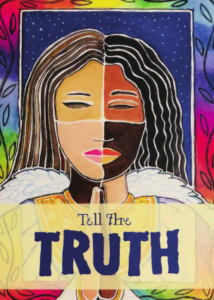 by Leah Landry, Precious Blood Volunteer
by Leah Landry, Precious Blood Volunteer
Most white people do not want to talk about race. In fact, I feel uncomfortable typing this article right now. I am so scared of saying something wrong or implying something hurtful so it would be easier to stay silent. But after Chicago Regional Organizing for Anti-Racism’s training (C-ROAR), I realize it does not matter what I want or what is easy: we have to talk about race.
I knew early on that racism existed. When I was eight years old, my brother’s best friend joined our family. Shaun is African American and I saw that he was treated differently than my Caucasian brothers in our predominately white neighborhood. I remember Shaun and me getting weird looks when we were together and the police pulling him over much more often than my white brothers. But our conversations at home were about how other people were discriminatory, never about how racism worked through us as white people. I knew I had white privilege, but I did not realize I was part of the problem.
As a year-long volunteer at Precious Blood Ministry of Reconciliation (PBMR), all my suspicions that racism ran deeper than I could articulate intensified. I see every day how people are discriminated against because of the color of their skin. In the Juvenile Temporary Detention Center, I was overwhelmed and appalled by the disproportionate number of black and brown teens my city locks up. While working at PBMR, I accompanied a young woman to court and was immediately told I could use the shorter line because the guard mistook me—the only white woman in the crowd—as a lawyer. I met young men who were given tickets for jaywalking and biking on the sidewalk while I had escaped every instance of a police stop with nothing more than a warning. I witnessed intense poverty: people struggling to pay rent, afford clothes, or feed a family, always one crisis away from losing everything. I saw all this and knew that there must be root causes, but I did not understand the depth to which racism and white supremacy created and perpetuated these circumstances.
Through the anti-racism training and researching on my own, I learned that racism is at the heart of every one of these issues. I discovered that nationwide policies of redlining forced black families into segregated neighborhoods and denied them access to the same government-backed loans that allowed my own grandparents to buy a home (“A Case for Reparations”, Ta-Nehesi Coates). I found out how the criminal justice system is designed to target, imprison, and harass people of color (The New Jim Crow, Michelle Alexander). I learned how the inequities originated: not because of something inherent or lacking in communities of color, but because of structures that intentionally privilege white people and subjugate people of color.
The hardest lesson I learned is that racism is not just the overt, stereotypical racism we immediately think of, like the KKK or the rally in Charlottesville. It is the deep-rooted racism of unconscious bias that lies within all of us, because we were all raised in a racist society. This was and still is hard to fully comprehend for me. I, in my ignorant whiteness, perpetuate racism, even though I have a black brother who I love dearly, even though I say I am committed to racial equity and justice, even though my family told me to love everyone regardless of race. I have centuries of ingrained white supremacy born into me. I was raised in a society that was built on the backs of enslaved people of color and live in a country that continues to privilege white people.
The anti-racism weekend was transformational for me. It highlighted how entrenched white supremacy is and now I cannot un-see it. The most challenging part is that now I see racism play out in me. I catch myself stereotyping, preferring white people and white practices, making myself the center in spaces of color, and poking holes in stories of discrimination and racism. One particularly poignant moment of recognizing my own racism was when a person of color in the anti-racism training called me out for my racist behavior during the training itself. It is painful and embarrassing to admit it, but I know it is the truth. I hope that acknowledging my faults can clear the way for other white people to start noticing their own. Nothing is going to change until white people recognize that we are part of the problem, that we are perpetuating the system of white supremacy, whether consciously or unconsciously. But we cannot stop at recognizing that racism works through us, we also must begin to change.
Every time I recognize a way in which I am perpetuating white supremacy, I try to change my behavior and truly stand up for communities of color. I repeatedly question my actions in all my work at PBMR, since I am in a position of power over women of color. I am trying to rework the system so that the young women can be in charge. I am continuously investigating how I, as a white woman, can play a role without recreating unjust structures. I am educating myself on both the oppression and strengths of different communities of color, as I know that each community—and each individual for that matter—has a unique experience of discrimination. I am constantly trying to learn how to be more aware and understanding.
I know talking about race is hard. Believe me, writing this article was really hard, and scary. And we are going to falter and err sometimes. But that’s okay, because mistakes are part of the learning process. The only real mistake is if we do not try at all.
Leah is a current Precious Blood Volunteer serving at Precious Blood Ministry of Reconciliation in Chicago.
To learn more about becoming a Precious Blood Volunteer go to www.preciousbloodvolunteers.org.
Apr 10, 2018
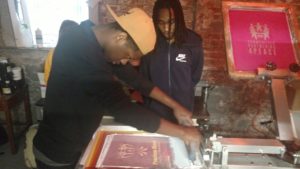
Saiveon and Branden begin their training
by Hector Avitia, Precious Blood Volunteer
During this Easter season we are celebrating the Resurrection of Jesus after being in the tomb for three days. At Precious Blood Ministry of Reconciliation (PBMR), we are also celebrating the return of the screen printing program, known as “Making Impressions.” This initiative is a great way for PBMR participants to learn a new skill, to express themselves through a different art medium, and for those outside of PBMR to give hope to the community.
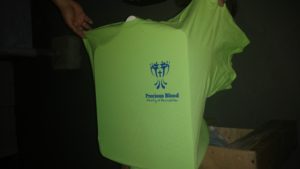
The very first shirt from”Making Impressions”
“Making Impressions” is ready to make custom screen printed shirts for clubs and organizations. Coming soon, “Making Impressions” and PBMR apparel will be available for anyone to show their support for our ministry and for the youth of Back of the Yards. You can contact PBMR about the “Making Impressions” program by email at makingimpressions@pbmr.org.
Mar 1, 2018

by Leah Landry, current Precious Blood Volunteer
The women of PBMR. Not a phrase you hear often at a Center started by four priests as a safe haven for young men. But over the past few years, the women in the neighborhood have become vital members of the PBMR community. On Saturday, February 3, these women gathered together to christen the new Mother Brunner House – the Women’s Center – with a mural that depicts the strength, serenity, and power of the women of PBMR.
The project included women from three programs at PBMR: the women of the advocacy group Community and Relatives of Illinois’ Incarcerated Children (CRIIC), the women from the Mothers’ Healing Circles who have lost children to incarceration and gun violence, and the Young Women’s Group, the newest program for women.
With the help and direction of PBMR’s teaching artist, Alberto Alaniz, the women gave suggestions of the words and images that come to mind when they think of the women of PBMR. The answers were as varied as the women themselves: unity, strength, love, hearts and stars, peace signs, mother and child. Then representatives from each program consulted with Alberto and together the group came up with the image for the wall. A few weeks later, over 20 women gathered at the Mother Brunner House to paint in the image.
You’d think a room full of 20 women, ranging from ages 6 to 80, painting a huge space with lots of color would be a chaotic scene, but the space had a peaceful, collaborative, and happy feel.
 Mrs. Wingard, the eldest and wisest in the group and a member of CRIIC, shared her reflections on the day: “Just to remember that I put a paintbrush on the wall and Fr. Kelly and Julie and Sr. Donna are gonna walk through there and see the mural and I thought ‘Wow, I really feel a part of that’…And then to think about them getting the house and putting something on the wall that actually reaches out to the community. [The mural] shows families coming together and it’s not just one ethnicity. It’s not just black, not just white, not just latino: it’s everyone coming together for a common cause, for our children, for our community.”
Mrs. Wingard, the eldest and wisest in the group and a member of CRIIC, shared her reflections on the day: “Just to remember that I put a paintbrush on the wall and Fr. Kelly and Julie and Sr. Donna are gonna walk through there and see the mural and I thought ‘Wow, I really feel a part of that’…And then to think about them getting the house and putting something on the wall that actually reaches out to the community. [The mural] shows families coming together and it’s not just one ethnicity. It’s not just black, not just white, not just latino: it’s everyone coming together for a common cause, for our children, for our community.”
Shumeka Taylor, a representative of the Young Women’s Group, said that putting the handprints and quotes on the wall was her favorite part. “The hands was so nice. We all who had been doing the part of the wall and engraving our names and a nice quote and that’s something that’s going to live forever in the house and I like that.” Shumeka added “From the older women to the young women, I truly enjoyed it. The older lady put the French braid in my hair while I painted the rest of the mural because they didn’t want paint to get in my 26 inches. I greatly appreciated everything that went on that day.”
Aldena Brown, a member of the Mothers’ Healing Circles, felt Helen Keller’s quote “Alone we can do so little. Together we can do so much” captured the essence of the day. “That day of the painting felt good. Everyone working together, good laughs, music, and food! That moment was like nothing mattered. Painting that mural was everything, just being a part of something so meaningful. That gave my heart joy and peace in that moment. My mind drifted to a great place pushing that paintbrush. Yes, I must say that will be a day I’ll never forget! I was a part of that painting coming to life! I’m very thankful!”
 The women of PBMR are leaving their legacy all over PBMR and the neighborhood, from the relationships they make to the steps they take towards their goals to the beautiful mural that will greet all the visitors of the Center. From now on, every person who walks through the doors of the Mother Brunner House will know that the women in the community are an integral part of PBMR: strong, unified, and here to stay.
The women of PBMR are leaving their legacy all over PBMR and the neighborhood, from the relationships they make to the steps they take towards their goals to the beautiful mural that will greet all the visitors of the Center. From now on, every person who walks through the doors of the Mother Brunner House will know that the women in the community are an integral part of PBMR: strong, unified, and here to stay.
You can learn more about serving as a Precious Blood Volunteer by going to www.preciousbloodvolunteers.org
You can learn more about our placement at Precious Blood Ministry of Reconciliation by going to https://preciousbloodkc.org/precious-blood-ministry-of-reconciliation/
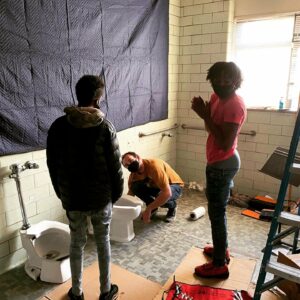
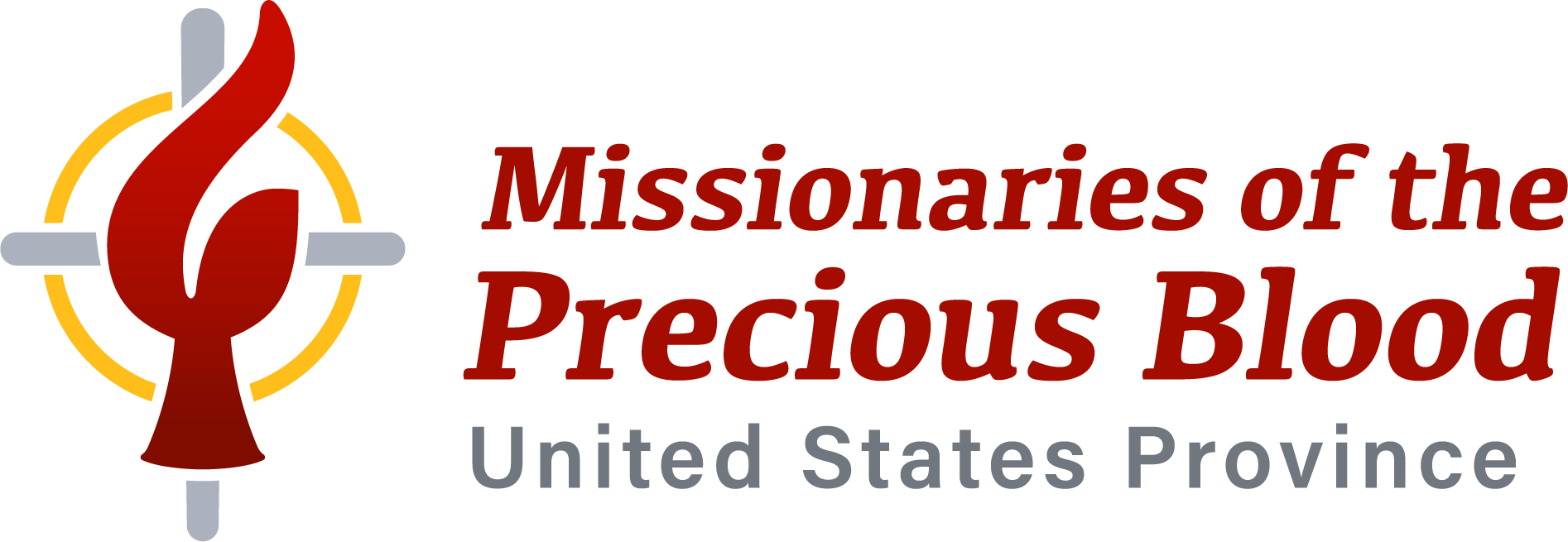

 by
by 



